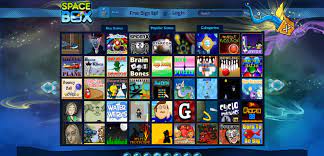Introduction:
In the rapidly evolving landscape of real estate marketing, virtual home staging has emerged as a game-changing tool for agents aiming to enhance property appeal in the digital realm. As the industry shifts towards online platforms, leveraging the right tools and techniques becomes crucial for a successful virtual home staging strategy.
I. Understanding the Essence of Virtual Home Staging:
Virtual home staging is a technique that transforms vacant or outdated properties into visually appealing spaces through digital means. By utilizing cutting-edge technology, agents can showcase a property’s potential to prospective buyers, facilitating a quicker and more lucrative sale.
II. Key Tools for Virtual Home Staging:
a. 3D Rendering Software: Harness the power of 3D rendering software to create realistic and immersive virtual environments. These tools allow agents to visualize potential designs and furnishings, enabling them to tailor the staging to a target demographic.
b. Virtual Furniture Platforms: Explore virtual furniture platforms that provide a vast library of furniture and decor options. This allows for customization based on the property’s style and target market, without the need for physical furniture placement.
c. Augmented Reality (AR) Apps: Implement AR apps to offer potential buyers an interactive experience. These apps enable users to virtually “walk through” a property, experiencing the staged design firsthand. This immersive approach enhances buyer engagement and emotional connection with the space.
III. Techniques for Effective Virtual Home Staging:
a. Photorealistic Imagery: Prioritize high-quality, photorealistic imagery to create a compelling visual narrative for the property. This not only attracts potential buyers but also helps them envision themselves in the space.
b. Consistency in Design: Maintain a consistent design theme throughout the virtual staging process. This ensures a cohesive and harmonious presentation, allowing buyers to focus on the property’s strengths without distractions.
c. Highlighting Key Features: Use virtual staging to emphasize the property’s unique features. Whether it’s a stunning fireplace, panoramic windows, or spacious layout, strategic placement of virtual elements draws attention to these selling points.
IV. Overcoming Challenges and Addressing Concerns:
a. Disclosure and Transparency: Clearly communicate that virtual staging is being used in marketing materials to avoid any misrepresentation. Transparency builds trust with potential buyers and sets realistic expectations.
b. Collaborating with Professional Stagers: Consider collaborating with professional stagers who specialize in virtual staging. Their expertise can enhance the overall quality of the virtual staging and ensure it aligns with market trends and buyer preferences.
Conclusion:
Home staging Virtual has become an indispensable tool for real estate agents seeking to elevate their marketing strategies. By embracing advanced tools and implementing effective techniques, agents can create visually stunning representations of properties, attracting and engaging potential buyers in the competitive digital landscape. As the industry continues to evolve, mastering the art of virtual home staging will be essential for staying ahead in the real estate market.
















